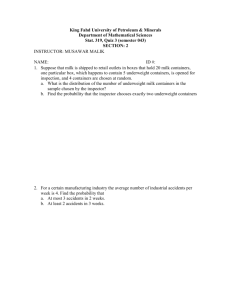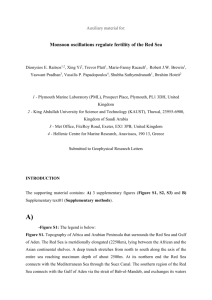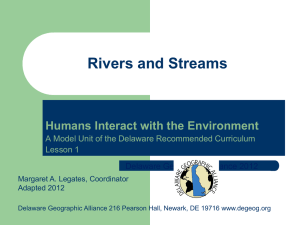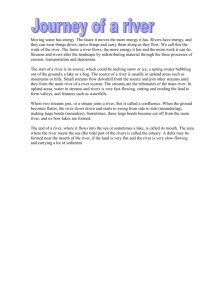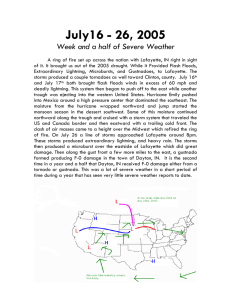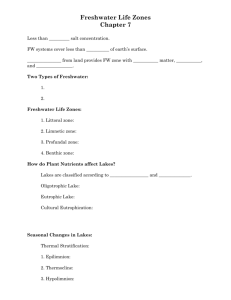rivers run north
advertisement
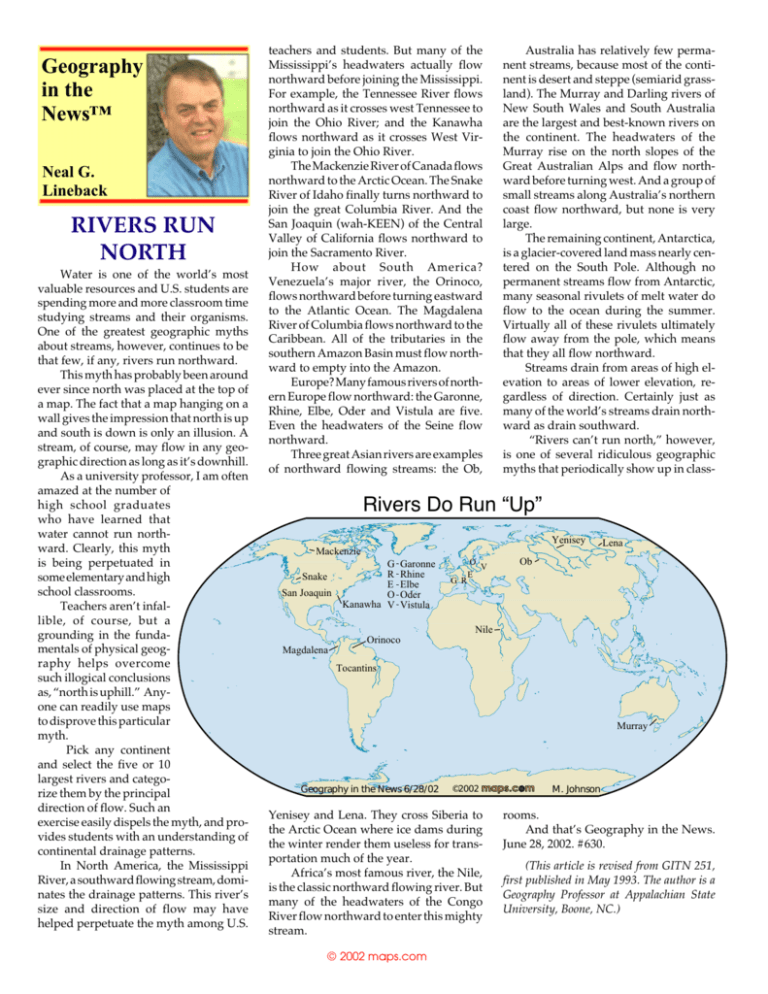
Geography in the News™ Neal G. Lineback RIVERS RUN NORTH Water is one of the world’s most valuable resources and U.S. students are spending more and more classroom time studying streams and their organisms. One of the greatest geographic myths about streams, however, continues to be that few, if any, rivers run northward. This myth has probably been around ever since north was placed at the top of a map. The fact that a map hanging on a wall gives the impression that north is up and south is down is only an illusion. A stream, of course, may flow in any geographic direction as long as it’s downhill. As a university professor, I am often amazed at the number of high school graduates who have learned that water cannot run northward. Clearly, this myth is being perpetuated in some elementary and high school classrooms. Teachers aren’t infallible, of course, but a grounding in the fundamentals of physical geography helps overcome such illogical conclusions as, “north is uphill.” Anyone can readily use maps to disprove this particular myth. Pick any continent and select the five or 10 largest rivers and categorize them by the principal direction of flow. Such an exercise easily dispels the myth, and provides students with an understanding of continental drainage patterns. In North America, the Mississippi River, a southward flowing stream, dominates the drainage patterns. This river’s size and direction of flow may have helped perpetuate the myth among U.S. teachers and students. But many of the Mississippi’s headwaters actually flow northward before joining the Mississippi. For example, the Tennessee River flows northward as it crosses west Tennessee to join the Ohio River; and the Kanawha flows northward as it crosses West Virginia to join the Ohio River. The Mackenzie River of Canada flows northward to the Arctic Ocean. The Snake River of Idaho finally turns northward to join the great Columbia River. And the San Joaquin (wah-KEEN) of the Central Valley of California flows northward to join the Sacramento River. How about South America? Venezuela’s major river, the Orinoco, flows northward before turning eastward to the Atlantic Ocean. The Magdalena River of Columbia flows northward to the Caribbean. All of the tributaries in the southern Amazon Basin must flow northward to empty into the Amazon. Europe? Many famous rivers of northern Europe flow northward: the Garonne, Rhine, Elbe, Oder and Vistula are five. Even the headwaters of the Seine flow northward. Three great Asian rivers are examples of northward flowing streams: the Ob, Australia has relatively few permanent streams, because most of the continent is desert and steppe (semiarid grassland). The Murray and Darling rivers of New South Wales and South Australia are the largest and best-known rivers on the continent. The headwaters of the Murray rise on the north slopes of the Great Australian Alps and flow northward before turning west. And a group of small streams along Australia’s northern coast flow northward, but none is very large. The remaining continent, Antarctica, is a glacier-covered land mass nearly centered on the South Pole. Although no permanent streams flow from Antarctic, many seasonal rivulets of melt water do flow to the ocean during the summer. Virtually all of these rivulets ultimately flow away from the pole, which means that they all flow northward. Streams drain from areas of high elevation to areas of lower elevation, regardless of direction. Certainly just as many of the world’s streams drain northward as drain southward. “Rivers can’t run north,” however, is one of several ridiculous geographic myths that periodically show up in class- Rivers Do Run “Up” Yenisey Mackenzie Snake San Joaquin G R E O Kanawha V Garonne Rhine Elbe Oder Vistula G R O V E Lena Ob Nile Orinoco Magdalena Tocantins Murray Geography in the News 6/28/02 ©2002 Yenisey and Lena. They cross Siberia to the Arctic Ocean where ice dams during the winter render them useless for transportation much of the year. Africa’s most famous river, the Nile, is the classic northward flowing river. But many of the headwaters of the Congo River flow northward to enter this mighty stream. © 2002 maps.com M. Johnson rooms. And that’s Geography in the News. June 28, 2002. #630. (This article is revised from GITN 251, first published in May 1993. The author is a Geography Professor at Appalachian State University, Boone, NC.)
